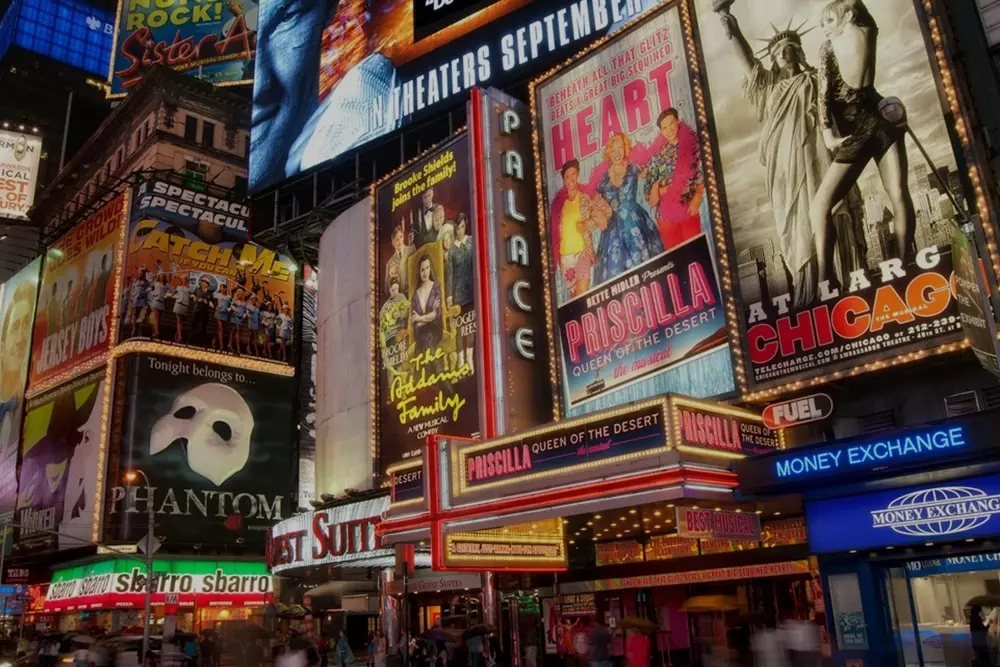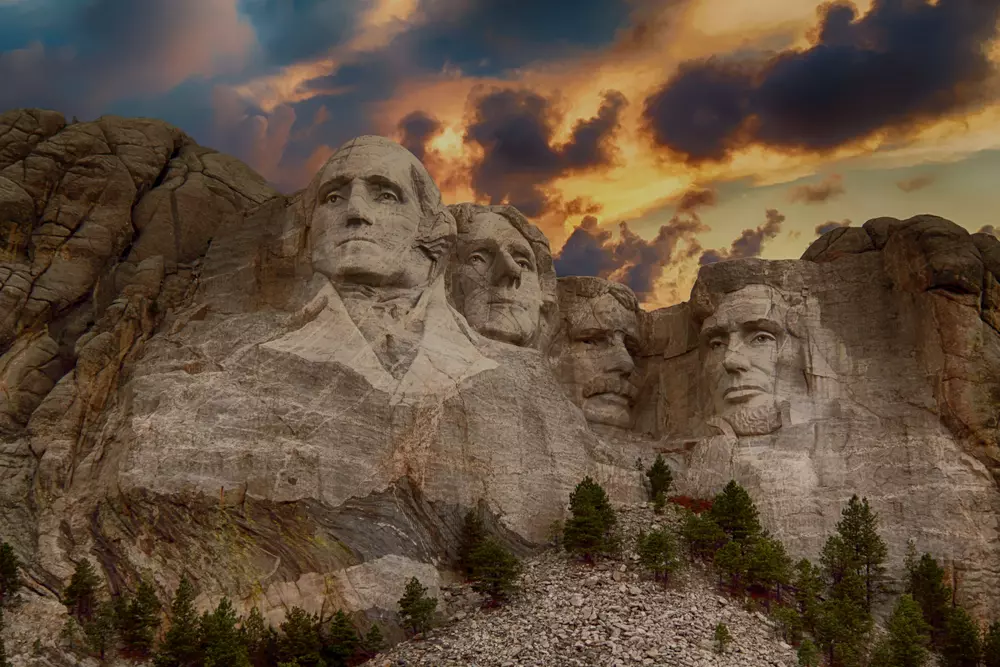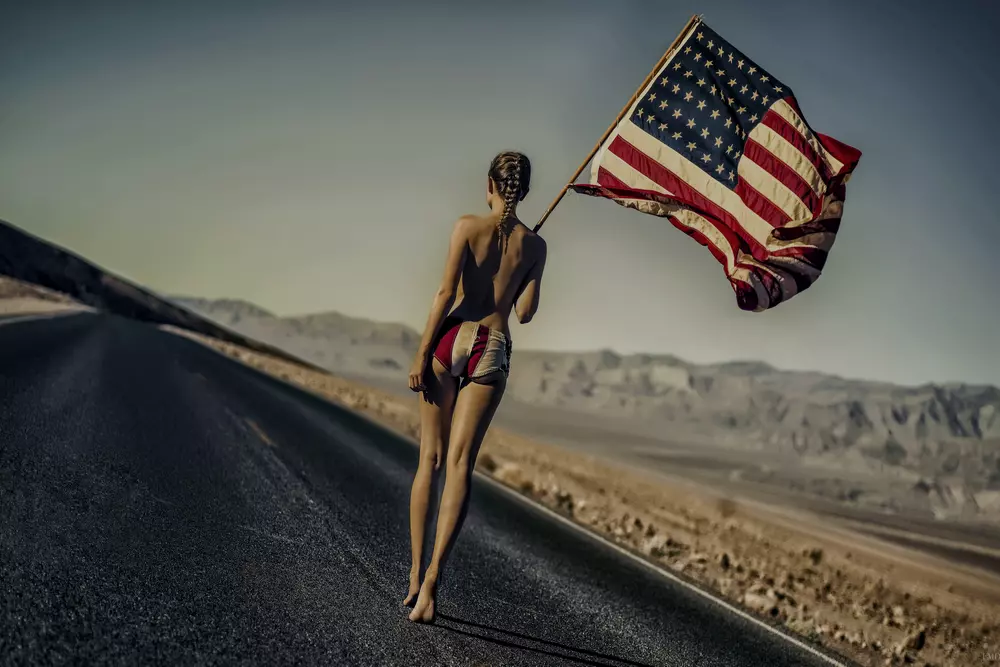"She could sing anything, and everything sounded like a masterpiece." — Frank Sinatra
In the world of music, there are not many names that command absolute respect from everyone — from academics to street musicians. Ella Fitzgerald is one of them. Not just a great singer, but a woman who managed to rethink jazz, to breathe softness, precision, freedom, and soul into it. This article is an invitation into her world. Without pretension, with humanity, and with a gentle emphasis on how 20th-century America nurtured its legends.
Ella is more than just a name on a vinyl cover. She is a symbol of an era when jazz was not merely a musical genre but a language spoken by hearts. Her voice was like a silk trail against the background of the saxophone. It could tell stories of pain, happiness, love, and disappointment better than any prose. Ella sang as if she knew every human emotion from the inside. Her notes were not just precise — they were sincere, and that’s why they touched the very soul.
Perhaps that’s why people still listen to her today. Not because "you have to know the classics," but because Ella’s music is timeless. Her voice sounds just as beautiful on a 1956 record, in the soundtrack of a modern film, or in the headphones of a student who has never held vinyl in their hands.
This is the story of how a person with no connections, no money, and not even a home of their own managed to become the voice of an entire country. And yet remain human — kind, humble, a bit shy. Ella Fitzgerald’s story is not just about jazz. It is a story of strength, talent, and remarkable humanity.
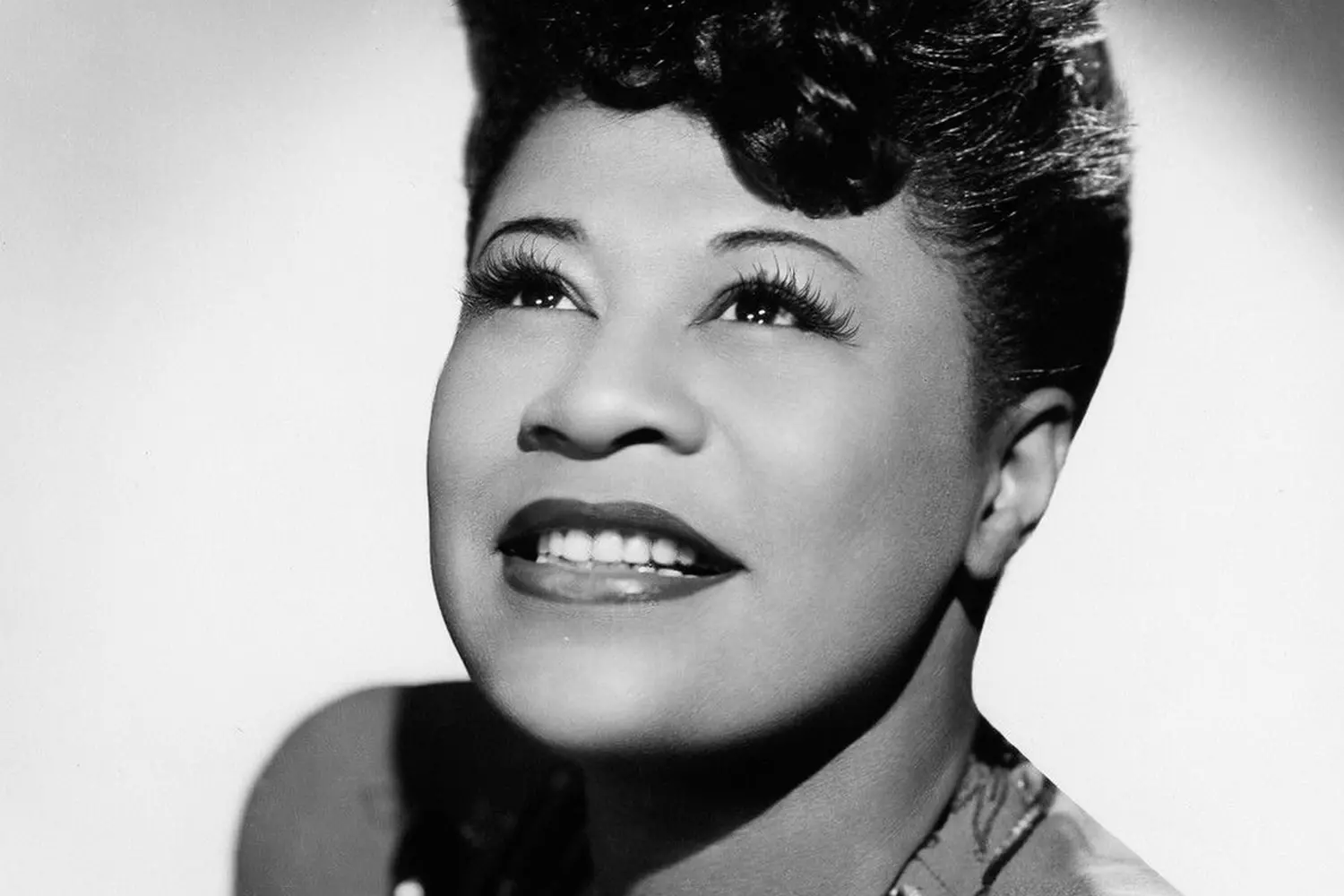
"She can sing even the phone book — and she'll do it so beautifully that you'll cry with joy." — Louis Armstrong
From Nowhere to the Spotlight: The Childhood and Youth of Ella Fitzgerald
Ella Jane Fitzgerald was born on April 25, 1917, in Newport News, Virginia. Her parents were not married, and a few years later, her father left the family. Little Ella and her mother moved to Yonkers, New York, where a tough life awaited her.
The childhood of the future star was far from a fairy tale. Her mother worked as a laundress and maid to support herself and her daughter. Ella learned to be independent early on — helping around the house, looking after younger children, singing in church, and dreaming of one day performing on stage. Music was her salvation: she listened to jazz on the radio, imitated her favorite artists, and memorized melodies after hearing them just once.
But life was harsh. When Ella was 15, her mother tragically died in a car accident. This became a turning point. The girl moved in with her aunt but soon ended up in a juvenile shelter. She ran away and began living on the streets. To survive, she worked as a messenger, guarded a brothel, and slept at night in shelters or stairwells. Due to her street life, Ella was even arrested and sent to a reform school.
It seemed everything was leading to ruin. But it was at that moment that an indomitable inner strength was born in her. She knew she could sing. And in 1934, just after turning 17, Ella decided to enter a talent contest at the legendary Apollo Theater in Harlem. She wanted to dance. But seeing how high the level of participants was, she changed her mind at the last moment — and sang instead.
Her voice stopped the crowd. A modest, skinny girl in an old dress suddenly began to sing as if she was born on stage. The audience didn’t just applaud — they stood up. Ella won the contest. That evening marked the beginning of a journey that would forever change both her fate and the musical history of the United States.

Jazz, Rhythm, and First Recognition: Ella Fitzgerald in the 1930s
The 1930s were a decade of growth and breakthrough for Ella Fitzgerald. Just yesterday, she was a homeless teenage girl; today, she was the lead singer of one of the most popular jazz orchestras in the country. This was the time when her voice was first heard on the radio, her name appeared on posters, and the sound of her laughter echoed behind the scenes of America’s largest concert halls.
- 01. With Chick Webb’s Orchestra — How the Legend Began
After her triumph at the Apollo Theater contest, Ella caught the attention of musicians. The drummer and bandleader Chick Webb played a key role. He was tough, demanding, and trusted no one blindly — especially young and unknown talents. But upon hearing Ella, he realized: this was not just a young vocalist but a rare talent.
In 1935, Chick Webb hired her into his big band, performing at the famous Savoy Ballroom — the holy of holies of New York swing. The best dancers, fashionistas, and, of course, jazz musicians gathered there. And now — Ella.
“At first, she was shy, standing in the corner avoiding attention. But when she sang, the whole hall fell silent,” recalled one of the orchestra musicians. - 02. First Hit: “A-Tisket, A-Tasket”
In 1938, Ella recorded her first real smash — a children’s nursery rhyme turned jazz number. The song “A-Tisket, A-Tasket” instantly climbed the charts and made her famous nationwide. And the success wasn’t accidental: the tune had a rhythm that made everyone dance — from workers to college students. - 03. 1 Million Copies Sold — An Unprecedented Result for That Time
The song played on all radio stations. Ella became a symbol of a new generation of jazz singers: bold, stylish, and full of character. - 04. Life on the Road and Behind the Scenes
The 1930s were years of endless touring across the country. Ella traveled with the orchestra from New York to Chicago, from New Orleans to Los Angeles. These were tough times: America was going through the Great Depression, African-American artists were often denied hotel rooms and even stage access.
Ella slept on trains, ate in backstage kitchens, and washed up in restaurant sinks. But she never complained. She just sang. And won hearts.
“When Ella took the stage, you forgot about skin color, poverty, pain. Only one thing remained — music,” said one fan. - 05. The Death of Chick Webb — and the Start of a New Chapter
In 1939, Chick Webb died of spinal tuberculosis. For Ella, it was a blow — he was not only the band leader but also a mentor. However, it was then that she first stepped up as a leader herself. The orchestra did not disband. Ella took the helm.
She became the first woman to lead a big band. Young, Black, without formal musical education — but with talent and a strong will to live. It was a challenge, and she accepted it.

A New Voice of the Era: Ella Fitzgerald in the 1940s
The death of Chick Webb could have been the end — but for Ella Fitzgerald, it was just a comma. The beginning of a new chapter. In the 1940s, she matured not only as an artist but also as a woman, a leader, and a personality who fought for her right to sound the way she wanted. This decade became a time of self-definition and powerful creative rise for her.
- 01. Leading the Orchestra: First Steps as an Equal
After Chick’s death, Ella didn’t just continue working with the orchestra — she took charge of it. In a world where female leadership was an exception, especially in the male-dominated and often sexist jazz community, she proved that she was respected not out of politeness, but for her talent.
Her big band became one of the most popular in the country. But Fitzgerald felt the orchestra format was becoming limiting. She longed for new musical forms, for freedom, and for the chance to improvise. - 02. A Turning Point: Meeting Norman Granz
In 1946, Ella met the man who would change her career forever — Norman Granz, impresario and founder of the legendary Jazz at the Philharmonic project. This was not just a tour — it was a jazz march across the country that broke racial barriers and united the best musicians of the time.
Granz believed in Ella unconditionally. He became her manager, producer, and loyal friend. With his help, she began a solo career free from orchestra contracts and record company restrictions.
“Ella could take the stage and with one vocal passage turn the entire evening around. I didn’t just believe in her — I knew she was the best,” Granz said. - 03. Developing a Vocal Style: From Scat to Ballads
During these years, Ella began to actively experiment with scat — jazz vocal improvisation without words. Her voice became an instrument: she “played” it like a saxophone or trumpet. She did this with such ease and precision that critics began comparing her to the greatest instrumentalists of the time.
At the same time, she perfected her ballad technique. Her performances of slow, emotional songs — such as “Embraceable You” and “Someone to Watch Over Me” — are still considered standards. - 04. Touring, Recognition, and the First Decca Contract
By the late 1940s, Ella had become a national star. She toured with Louis Armstrong, Coleman Hawkins, Benny Goodman. Her radio and television performances made her voice recognizable even beyond the USA.
She signed a contract with Decca Records, where she began recording solo albums. Her repertoire expanded: it was no longer just jazz but also elements of popular music, gospel, and blues.
During a performance in Texas, Ella and her band were denied a hotel room due to racial segregation. Upon learning this, Marilyn Monroe personally called the owner and demanded Ella be allowed on stage. Later, Ella recalled: “I owe Marilyn for helping me perform in the most prestigious clubs. She broke the rules for me.”
In the 1940s, Ella definitively transcended genre boundaries. She was no longer called a “good singer for her time.” She was simply great. Regardless of era, gender, skin color, or musical style.
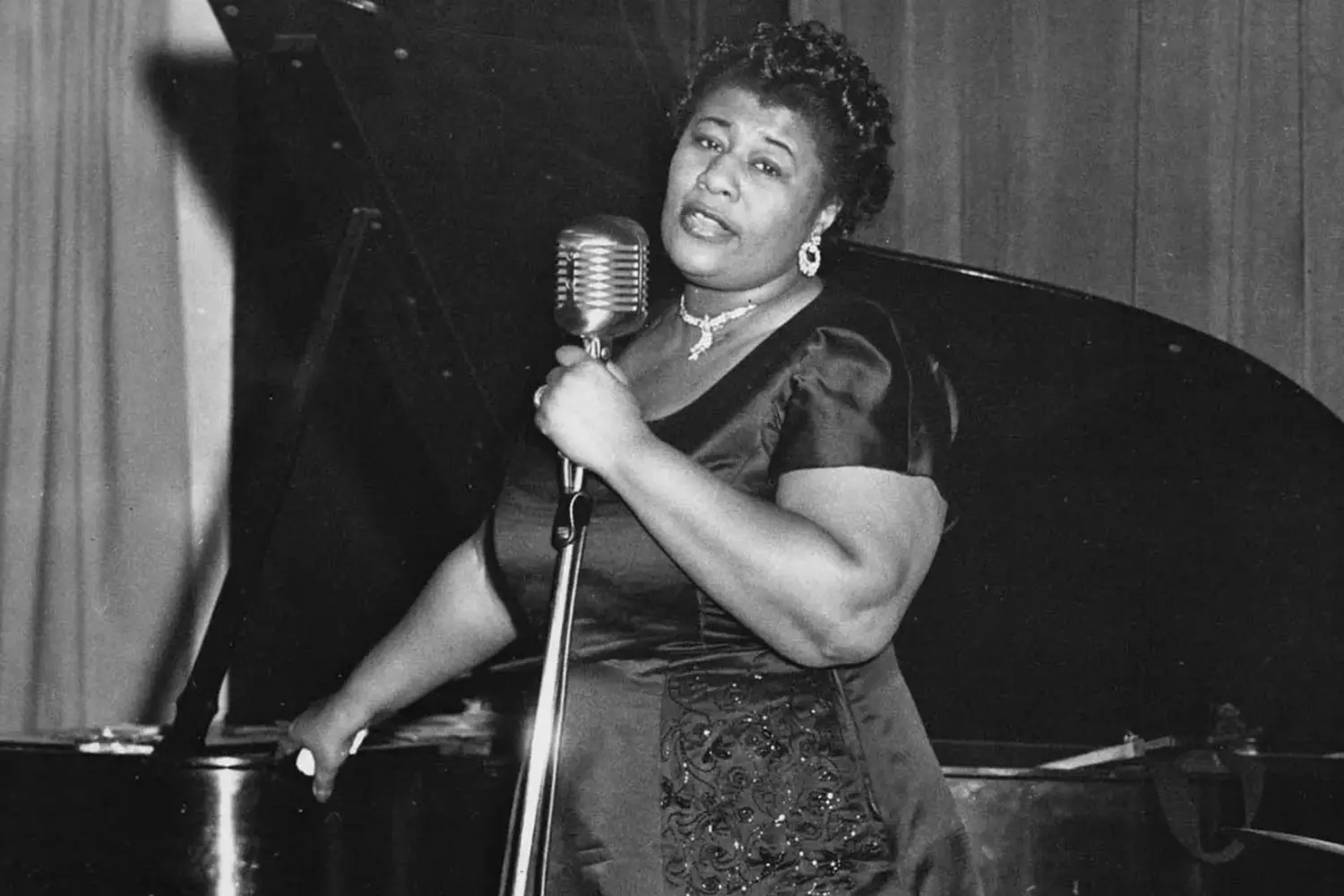
“A Legend on Vinyl”: Ella Fitzgerald in the 1950s–1960s
By the 1950s, Ella Fitzgerald was no longer just a singer. She had become a cultural icon of America, the gold standard of jazz, and a voice respected and adored on both sides of the Atlantic. But it was in these decades that she made a creative leap that would make her name immortal. The time had come when Ella became synonymous with the word “perfection.”
- 01. Songbook Series: Timeless Albums
In 1956, Ella signed a contract with Verve Records — a label created especially for her by Norman Granz. That’s when her most ambitious and grand project began — the "The Great American Songbook" series. Each album was dedicated to one great American composer:
- Cole Porter Songbook (1956)
- Rodgers & Hart Songbook (1956)
- Duke Ellington Songbook (1957)
- Irving Berlin Songbook (1958)
- George and Ira Gershwin Songbook (1959)
- Harold Arlen Songbook (1961)
- Johnny Mercer Songbook (1964)
- Jerome Kern Songbook (1963)
Each recording is like a museum work of art. Ella sang with perfect diction, respecting the original but never forgetting her own interpretation. She didn’t just cover the songs — she recreated their essence. These albums became not just musical hits but the foundation of America’s musical canon. Even now, vocal textbooks cite Fitzgerald’s intonations and phrases from these recordings.
- 02. Duets: When Two Titans Share the Stage
In the ’50s and ’60s, Ella actively collaborated with other jazz giants. Her partnership with Louis Armstrong was especially productive and legendary. Together, they released three masterpiece albums:
- Ella and Louis (1956)
- Ella and Louis Again (1957)
- Porgy and Bess (1959)
The contrast between their voices — Ella’s velvet and Armstrong’s raspy brass — created magic. This was jazz in which one could feel tenderness, playfulness, soul, and love. She also sang with Oscar Peterson, Dizzy Gillespie, Count Basie, and Frank Sinatra.
These stage meetings were not formal duets but living dialogues of two forces. Ella knew how to feel her partner and build musical bridges even if stylistically they came from different worlds.
- 03. European Tours and Worldwide Fame
The ’50s and ’60s were the time when Ella became not only an American star but a global phenomenon. Her concerts in Paris, London, Tokyo, Sydney drew packed houses. Presidents, princes, students, and street musicians came to see her. She had no glossy glamour or scandals — just a voice that mesmerized.
In 1958, Ella became the first African American woman to receive the “Grammy” — she won two that year. Later she would receive 14 in total. - 04. Ella in an Era of Change
The 1960s were a time of protests, civil rights movements, new sounds, and new forms. Ella stayed true to jazz but didn’t stay stuck in the past. She recorded blues, bossa nova, covers of The Beatles, and even cautiously tried pop. She was respected in the new musical wave, from Bob Dylan to Aretha Franklin.
Though young people began turning to rock ’n’ roll, Ella didn’t fade into the shadows. Because she was beyond genre and beyond fashion. She was called the “First Lady of Song” — and it sounded not like a title but like a truth.
Interesting fact: In 1956, during a tour in Australia, Ella was detained at the airport along with her band — allegedly for drug smuggling. However, it later became clear that the arrest was an attempt to sabotage the performance of black artists. Ella, without making a fuss, gave a free concert right in the police station — and became a local hero in the news.
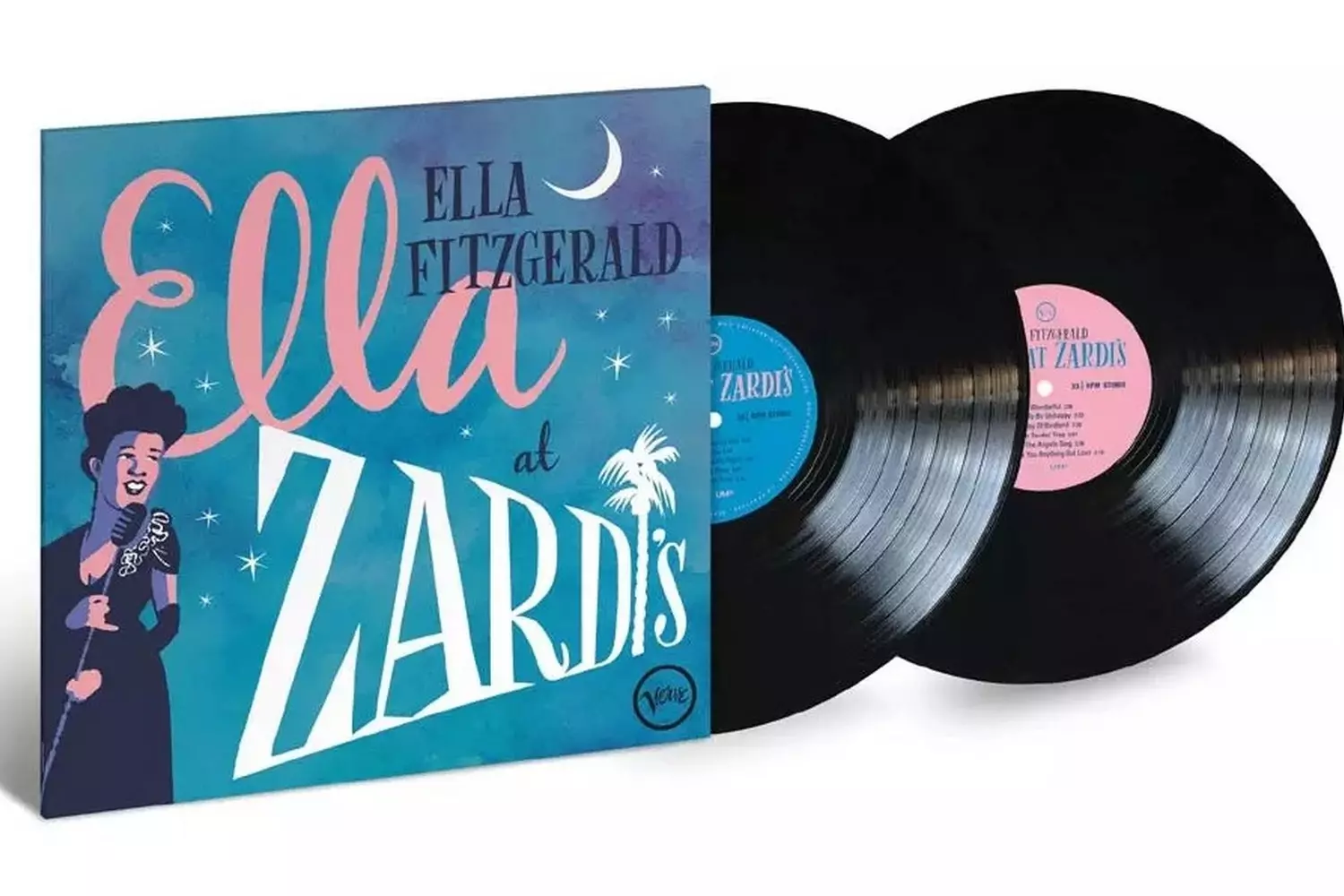
The Final Stage: Ella Fitzgerald Before the Curtain Falls
Her voice graced the world for half a century. Millions of records, dozens of countries, hundreds of stages. But even the greatest are not eternal. In the 1970s–1990s, Ella Fitzgerald faced what every artist fears: the body began to fail. But her spirit remained strong. Until the very end, she remained the same Ella — a woman with a kind smile, a witty joke, and a voice that could never let you down, even when everything else did.
- 01. Leaving the Stage — Not from Memory
In the ’70s, Ella was still touring. With less grandeur, less often, but each of her appearances was an event. People listened standing. They knew: before them was not just a singer, but a living legend of American music.
However, her health was becoming increasingly fragile. Diabetes, heart problems, deteriorating eyesight. But most importantly — she hardly complained. When asked if she was afraid to leave the stage, she replied: “I’ve already sung everything. Now let others sing. And I’ll just listen.” - 02. 1986–1991: Last Awards and Performances
Despite illness, Ella continued recording albums and performing. In 1987, she received the National Medal of Arts from President Ronald Reagan. And in 1991, she was awarded the Gershwin Prize for Popular Song, becoming the first woman to receive it.
Ella’s last major public performance was in 1991 at Carnegie Hall — symbolically: where she began, she also said goodbye. After the concert, the audience gave her a long standing ovation. She took a bow and said, “Thank you for listening to me all these years. You were my music.” - 03. Illness and Passing
By the early ’90s, Ella’s condition worsened. Diabetes reached an advanced stage. She went blind in one eye, and her kidneys failed. In 1993, both her legs were amputated below the knee. After that, she rarely left her home. However, friends recalled that even in a wheelchair she remained the life of the party.
She lived in Beverly Hills with her adopted son Ray Brown Jr., who cared for her until the end. Music always played in her home — records of Duke Ellington, Sinatra, and sometimes her own recordings. But she especially loved listening to young singers inspired by her. Ella did not feel jealous but joyful. “If someone sings better than me, it means I did everything right,” she said.
Ella Fitzgerald passed away on June 15, 1996, at the age of 79. The world lost not just a vocalist. It lost an era.
After Ella’s death, U.S. President Bill Clinton issued an official statement: “With Ella Fitzgerald, one of the most beautiful voices of the 20th century is gone. Her songs will live on as long as music itself lives.”
Ella Fitzgerald didn’t just live for the stage — she made the stage a place of respect, dignity, tenderness, and endless love for music. And even after her passing, she remains with us — in every voice that sings from the heart.
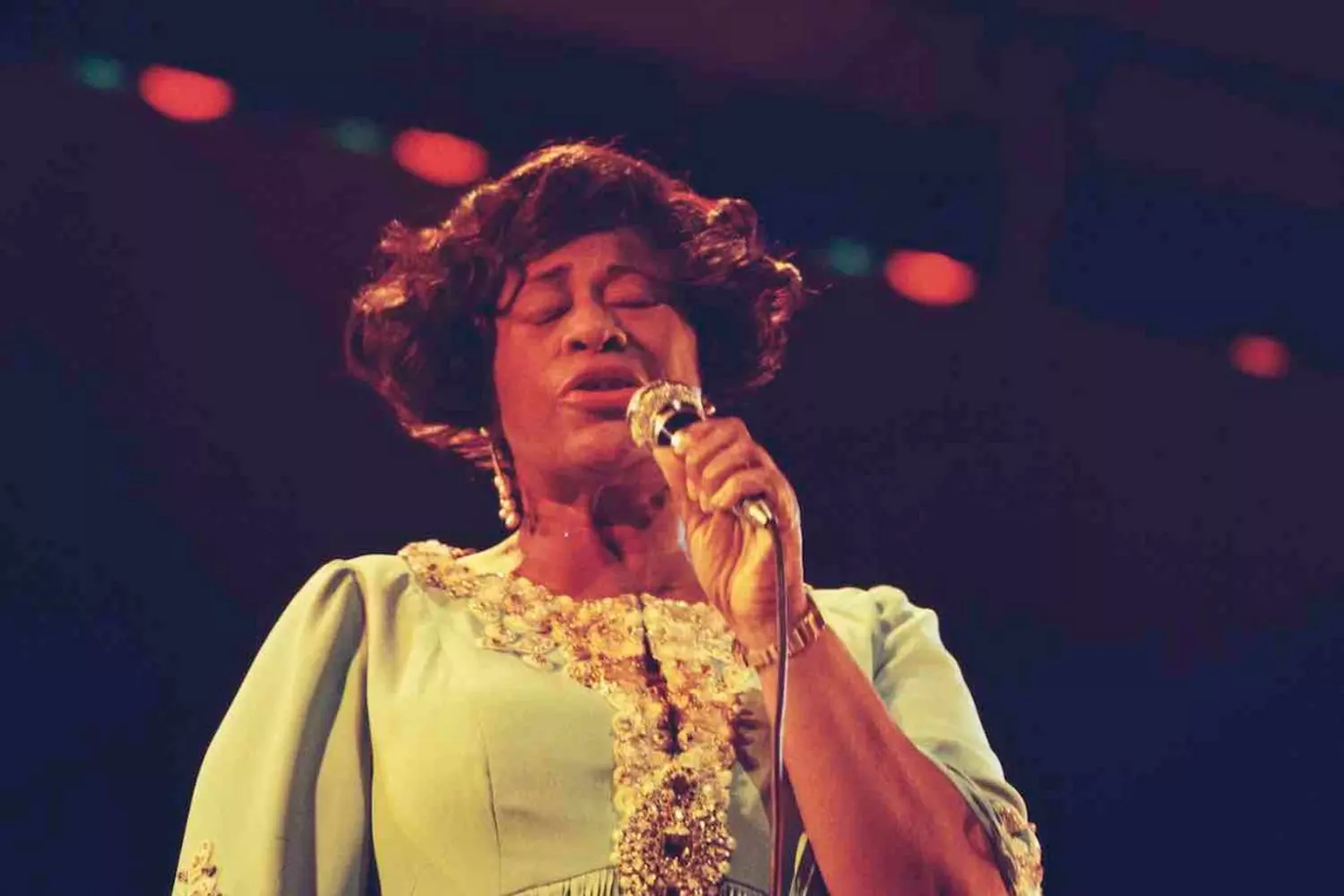
Scat — The Wordless Language of Jazz
Scat singing is like speaking a language that doesn’t exist, but everyone understands. It’s not just a set of sounds like “ba-du-bap” or “shi-bi-du-ba” — it’s a true musical dance where the voice ceases to be just a voice and turns into a saxophone, trumpet, bass, or drum.
And if anyone in the 20th century elevated scat to an art form — it was Ella Fitzgerald.
Scat originated back in the 1920s–30s: practiced by Louis Armstrong, Cab Calloway, Sarah Vaughan. But Ella was the one who made scat a high art, a discipline where improvisation was combined with exquisite technique and a strong sense of rhythm.
She didn’t sing scat as a mere replacement for words, but as a fully developed and shaped musical thought. Her vocal runs were so precise in rhythm and harmony that jazz musicians were simply amazed: “How does she do it — without an instrument, without sheet music, just her voice?”
“Ella could take a scat improvisation and build a complete musical solo from it, rivaling a saxophone or trumpet,” said trumpeter Dizzy Gillespie.
Why her scat is more than just “ba-ba-du-ba”
- Technique
She used micro-glissandos, vocal “clicks,” multifaceted accents, and performed at tempos that even drummers struggled to keep up with. - Sense of Harmony
Ella’s scat was never chaotic — it was precise improvisation based on deep knowledge of jazz theory. - Musical Memory
She could “quote” other melodies, inserting phrases from classical music, swing, pop — in the middle of one track you might hear Bach and The Beatles.
Albums where scat is pure magic
- "Ella in Berlin" (1960)
Perhaps one of the most famous scat recordings in history. In the song "How High the Moon", Ella embarks on a 4-minute vocal improvisation, moving from jazz phrases to quotes from popular songs — all without a single mistake. The audience goes wild. - "Ella and Louis" (1956)
Duets with Louis Armstrong are a textbook example of two forces interacting. Their improvisations make scat a dialogue: playful, lively, and slightly flirtatious. - "Ella Sings Gershwin" (1950)
Here, scat is like a light seasoning sprinkled into classic American melodies. Ella shows that vocal freedom doesn’t have to be loud — it can be subtle and delicate.
Fun fact: During one concert, Ella forgot the lyrics to the song “Mack the Knife” — and immediately replaced the missing words with scat, which sounded so natural and organic that the audience thought it was intentional. This improvised moment became iconic and was included in the final version of the "Ella in Berlin" album.
Ella Fitzgerald’s scat is not just a technique. It’s an expression of freedom, playfulness, lightness, and mastery. It’s when words aren’t needed to say everything. And even today, her scat remains unique — because it was sung not just by a singer, but by the soul of jazz.
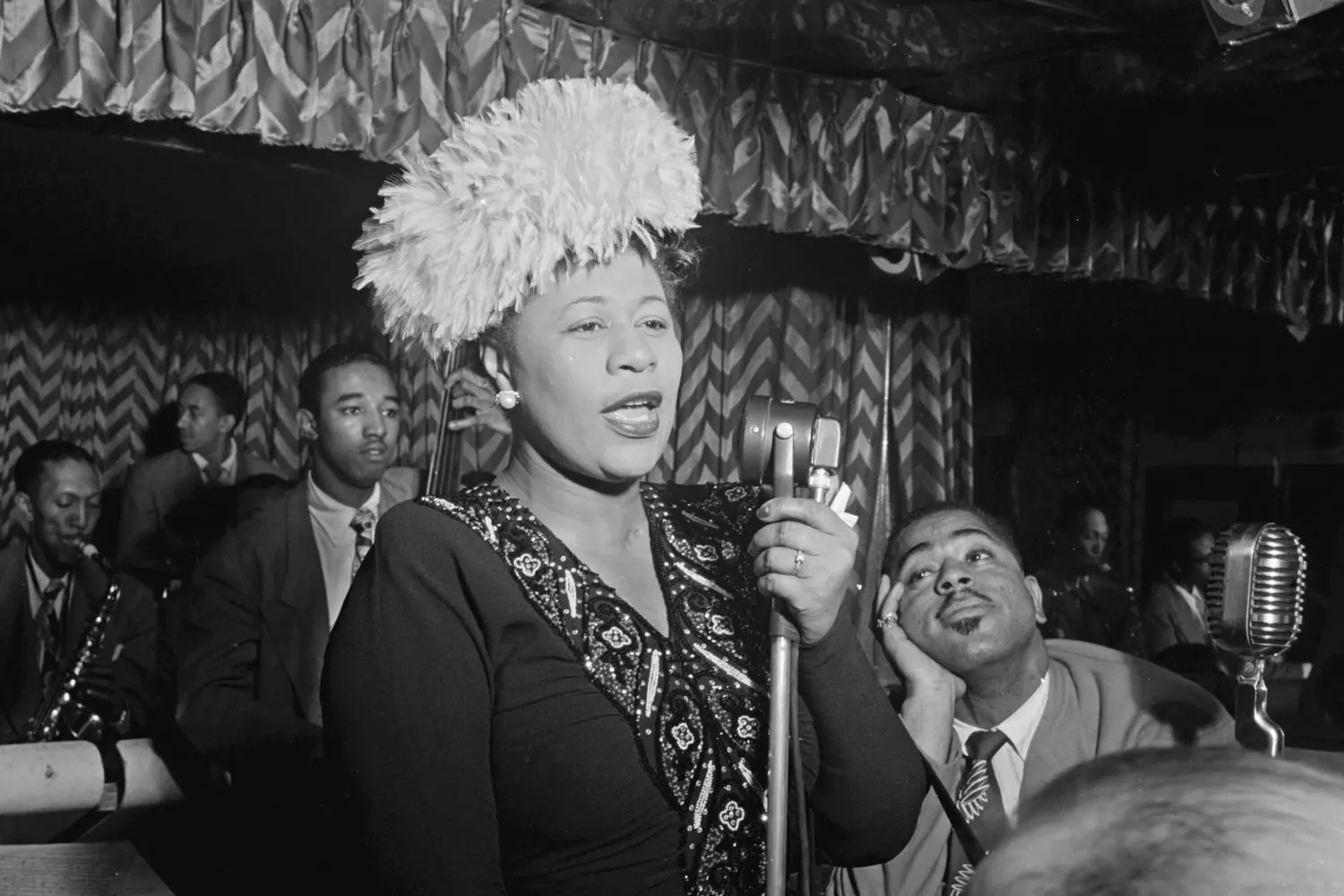
A Star of Eternal Fame: Awards and Recognition of Ella Fitzgerald
Throughout her long and brilliant career, Ella Fitzgerald earned not just awards — she became a symbol of recognition and respect in the world of music and culture. Her name is enshrined in the golden treasury of American art, and her influence is felt even by those who have never heard her live performance.
- 01. 13 Grammys — the pinnacle of musical honors
Ella was one of the first African-American artists to receive a Grammy. In total, she won 13 trophies — not only for specific albums but also for lifetime achievements. This rare recognition is reserved for those who have forever changed the musical landscape.
Her first Grammy in 1958 was a landmark moment — at a time when African-American performers were often sidelined by the industry, her success broke barriers for generations to come. - 02. National Medal of Arts — a mark of honor from the nation
In 1987, Ella was awarded the National Medal of Arts of the USA — the highest government honor in the field of culture. This award acknowledged that her work transcended entertainment and became part of the national heritage.
“Ella Fitzgerald made an invaluable contribution to American music, turning jazz into a truly popular art form,” the administration said. - 03. The Kennedy Center Honors — contribution to cultural heritage
In 1992, Ella received the Kennedy Center Honors — one of the most prestigious American awards for contributions to culture and the arts. This award is given to artists whose work influenced not only art but society as a whole. - 04. Star on the Walk of Fame — a symbol of legend
In Hollywood, Ella received her star on the Walk of Fame — a symbol of recognition from the entertainment industry that many aspire to. This star became a kind of monument to her lasting influence on music and culture. - 05. The love of presidents and the people
Her talent captivated a wide range of audiences — from US presidents to simple listeners in small clubs. She did not seek scandal or flashy trends; her weapon was pure mastery and sincerity.
“She could make you believe she was singing just for you,” said one of her fans.
It was this natural humility and dedication to music that made Ella not just a star, but a true legend whose fame lives on today.
Ella’s awards are not just medals and trophies. They reflect her influence on music, culture, and the hearts of millions of listeners. They remind us that true talent doesn’t need loud words — it speaks for itself.
Ella Fitzgerald’s Legacy: How the Voice of a Legend Resonates in Modern Music
Ella Fitzgerald is not just a name from music history textbooks. She is a living thread that connects the golden age of jazz with today’s musical world. Her voice, technique, and creative approach continue to inspire musicians and listeners worldwide. Today, many performers — from jazz vocalists to pop stars and soul artists — openly acknowledge Ella as their mentor. Her mastery of vocal technique, especially scat singing — the art of improvisation without words — has become a standard that many aspire to.
- Nora Jones, Diana Krall, Beyoncé, and even Michael Bublé have mentioned in interviews that Ella was their benchmark and inspiration.
- Singers study her breathing, phrasing, and emotional delivery, trying to capture the same sincerity and ease.
Ella’s songs have been featured in films and TV series for decades, creating an atmosphere of an era and emphasizing characters’ emotions. Thanks to this, modern generations get acquainted with her work, often without even realizing it.
- Soundtracks for popular films often include her recordings or covers of her hits.
- TV shows use her music to create romantic or nostalgic moods.
In many conservatories and music schools worldwide, Ella’s songs are studied as examples of vocal technique and jazz interpretation. This helps young musicians understand how to combine technical mastery with emotional depth.
Interesting fact: In 2017, a music festival dedicated to Ella Fitzgerald was held in New York, where young artists from around the world performed her hits in a variety of styles — from classic jazz to hip-hop and fusion.
Today, Ella is not just history — she is a living inspiration. Her voice echoes in the hearts of musicians and listeners, and her music fills playlists worldwide, proving that a true legend never dies.

Behind the Scenes of a Great Diva: What Ella Fitzgerald Was Like
Behind Ella Fitzgerald’s dazzling and radiant stage presence was a surprisingly simple and down-to-earth woman. Despite her worldwide fame and millions of fans, Ella remained by nature a shy and incredibly modest person.
- 01. Modesty and love for simple pleasures
Her close friends and family said that Ella did not seek glamour and disliked excessive attention.
- She loved reading — especially books about history and biographies of great musicians. Time with a book was a true escape from the hectic touring life.
- Her favorite drink was simple sweet tea with lemon, which she often ordered even in the most expensive restaurants. It was like a little reminder of home and childhood.
- Ella said her life motto was “Only music. No politics.” She preferred to be judged by her talent, not by her views.
- 02. Personal life and family
Contrary to myths about eternal romances and fiery passions, Ella’s family life was quite calm and modest.
- She was married twice — first to Fred Playne, a musician, and second to Jim Green, her manager. Both marriages ended in divorce, but Ella always remained devoted to her family and close friends.
- She had a daughter, Linda, whom she loved dearly and tried to shield from the spotlight. Despite touring and a busy schedule, Ella always found time for her family.
- 03. Quiet activism in the era of civil rights struggle
Although Ella was not a loud public activist, her life and career themselves were acts of resistance during the era of racial discrimination.
- In those years, when African Americans were barred from many restaurants and theaters, Ella performed at Carnegie Hall — one of the world’s most prestigious concert venues.
- Her success, millions of records sold, and worldwide recognition sent a powerful message that talent and perseverance can break any barriers.
- Ella often donated money to charity, supporting organizations that helped Black families and youth.
- Despite societal pressures, she avoided public political statements, preferring to let her music speak for itself.
Ella Fitzgerald was not just the voice of an era — she was a real person with fears, joys, and resilience. Her modesty and kindness made her not only a great artist but also an example for millions.
Friends for life: Ella Fitzgerald’s musical partnerships
When great talents meet — magic is born
Around Ella Fitzgerald gathered some of the brightest and most talented musicians of her time. Her friendships with them were not just professional alliances — they were genuine human relationships, full of mutual respect, support, and inspiration.
- 01. Louis Armstrong — a duet of legends
One of Ella’s most famous and warm musical partnerships was her friendship with Louis Armstrong. Their joint albums are not just music — they are true stories told by two great jazz voices.
- Louis and Ella often said they could feel each other without words, as if their voices were parts of one whole.
- Their album “Ella and Louis” became a classic and proved that talented collaboration can be eternal.
- Behind the scenes, they were good friends: supporting each other in hard times and sharing a love for music and life.
Louis once said about Ella: “She is the most beautiful voice I’ve ever heard. She sings from the heart.”
- 02. Duke Ellington — inspiration and respect
Friendship with the legendary Duke Ellington brought Ella many creative discoveries. Duke, one of the most influential jazz composers and bandleaders, saw in Ella a unique singer able to bring his music to life with special soulfulness.
- Together they recorded several albums and often performed on the same stages.
- Ella respected Duke for his innovations and deep musical understanding.
- Their collaboration became a model of jazz interplay between vocalist and orchestra.
- 03. Nat King Cole — comradeship and mutual support
Ella shared not only music but also life experiences in the era of racial prejudice with Nat King Cole. They often performed together and exchanged stories about the challenges and joys of their careers.
- Their duets were marked by lightness and sincerity.
- They inspired each other to fight for recognition and justice in the music industry.
- Ella and Nat were examples of how talent and friendship can overcome any obstacle.
Ella Fitzgerald didn’t just sing — she built bridges of friendship and creativity that live on today. Her relationships with colleagues are an example of how music connects hearts and souls, creating true masterpieces.
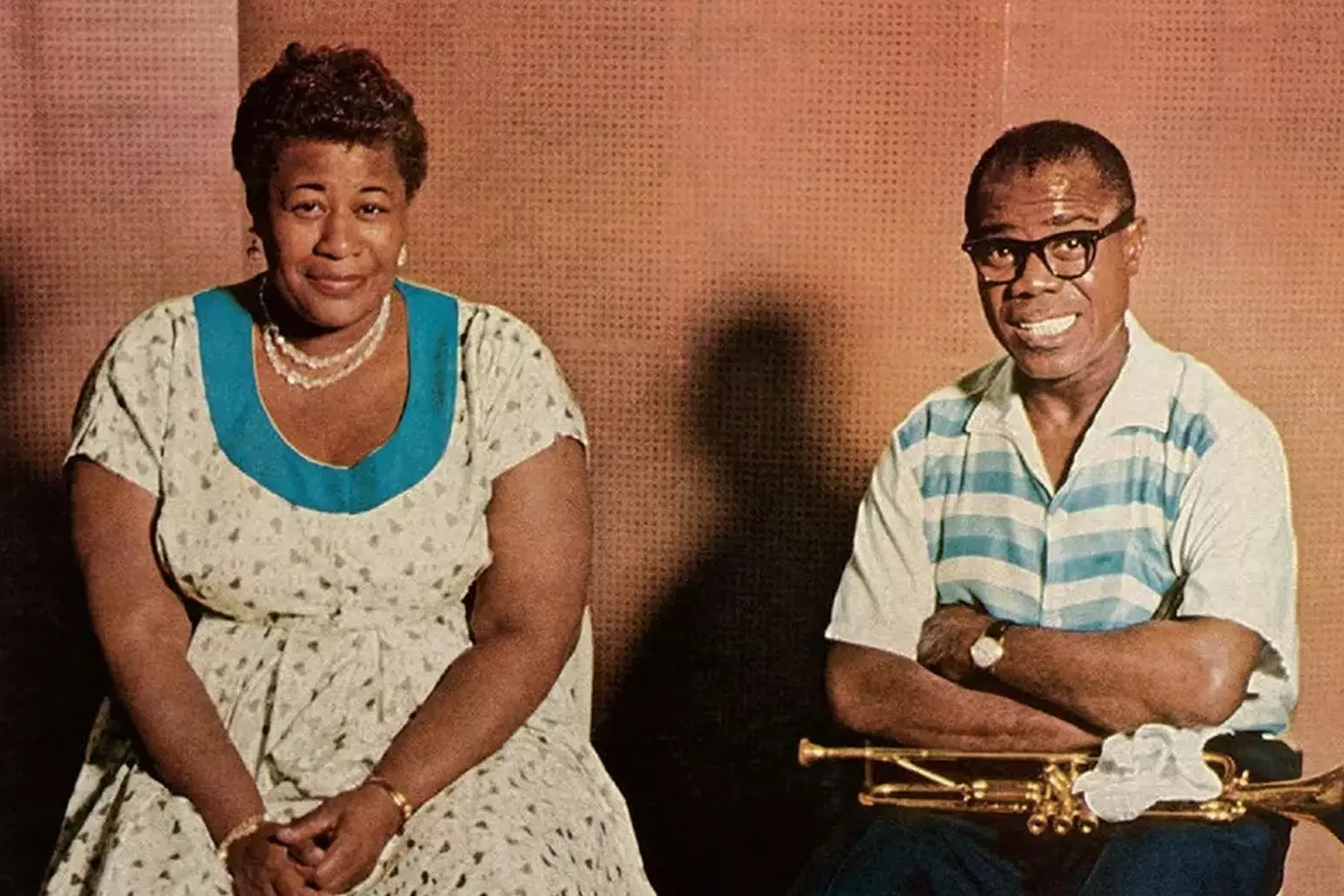
Ella Fitzgerald and America: The Voice of an Era, a Reflection of Culture
Ella Fitzgerald was not just an outstanding jazz singer, but a living embodiment of America’s cultural code in the mid-20th century. Her art and life path reflected the complex changes the country was undergoing and provide insight into the spirit of the era.
- 01. The voice that united during the war
During World War II, radio was the main source of information and morale. Ella’s songs echoed from speakers in homes and barracks, lifting spirits and offering hope.
- She performed songs that became unofficial anthems of the time, helping Americans cope with anxiety and fatigue.
- Her music was not just entertainment — it was part of the national unity in difficult years.
- 02. The first African American woman in the White House — a breakthrough without words
In the 1960s, Ella became the first Black singer invited to perform at the White House. This event carried enormous symbolic weight:
- At a time when racial segregation still held society in tension, this gesture was a sign of gradual progress toward equality.
- This performance was more than a concert — it was a signal to the world that America was changing.
- Ella sang with dignity and grace, showing that talent and personal dignity rise above all barriers.
- 03. Cultural diplomacy and the international image of the USA
The US government often used Ella in cultural diplomacy programs. She performed on stages in Europe, Asia, and Africa, representing American music and culture.
- In countries where the Cold Conflict was ongoing, her jazz was perceived as a symbol of freedom and creativity.
- Ella became a kind of “ambassador of goodwill,” showcasing the richness of American culture through music.
- Her tours abroad helped ease political tensions and build connections.
- 04. Ella as a symbol of dignity and soft power
For millions of Americans, Ella is an example of:
- Professionalism, as she worked tirelessly on herself and her voice throughout her life.
- Dignity, because she never succumbed to provocations and maintained her humanity in the world of show business.
- Soft power, where influence is achieved not by loud slogans but by talent, charisma, and sincerity.
After one of her performances at the White House, President Kennedy said to Ella: “You are the embodiment of America, strong not by weapons, but by art and freedom.”
Ella Fitzgerald was more than a singer. She was a mirror of America — its changes, struggles, and hopes, echoed in every track and every note of her legendary voice.

Unique and Little-Known Facts About Ella Fitzgerald
- 01. Она не умела читать ноты
Несмотря на голос в три октавы и виртуозный скэт, Элла никогда не училась музыке. Она пела на слух и импровизировала, что делало её стиль уникальным. - 02. Коллекция поваренных книг вместо кулинарии
Элла обожала читать рецепты, но почти не готовила. В её коллекции было около 300 кулинарных книг, которые теперь хранятся в Гарварде. - 03. Необычное хобби — бейсбол
В детстве она обожала спорт и даже мечтала стать профессиональной бейсболисткой. Её любимой командой были Los Angeles Dodgers. - 04. Её голосом проверяли акустику концертных залов
Из-за чистоты и диапазона её вокала (3 октавы!) инженеры использовали записи Эллы для тестирования акустики в знаменитых залах, включая Карнеги-холл. - 05. «Украденный» хит
Мелодию "Oh, Lady Be Good!" она услышала у уличного музыканта, запомнила и позже сделала хитом — но так и не нашла того парня, чтобы отблагодарить. - 06. Тайная благотворительность
Элла годами оплачивала обучение талантливых детей из бедных семей, но запрещала упоминать своё имя. Многие узнали о её помощи только после её смерти. - 07. Необычный ритуал перед концертом
Перед каждым выступлением она 15 минут стояла на голове в гримёрке. Говорила, что это "перезагружает голос". - 08. Проклятие первого брака
Её первый муж, наркодилер Бенни Корнегай, шантажировал её, угрожал и воровал деньги. Элла годами скрывала этот брак, называя его "самой большой ошибкой". - 09. Космическая Элла
Её запись "A-Tisket, A-Tasket" была включена в золотую пластинку "Вояджера", отправленную NASA в космос для инопланетных цивилизаций. - 10. Последняя шутка
За день до смерти, уже в больнице, когда медсестра спросила, как она себя чувствует, Элла ответила: "Я в порядке, просто задерживаюсь на пару нот".

America You Can Hear
Ella Fitzgerald is not just music. She is the breath of an era, the voice of a generation, and a living history of America. Want to touch the streets where her story began? Take a walk through Harlem, visit the Apollo Theater, and enjoy a coffee in an old jazz bar where her records once played?
American Butler organizes a tour for you around New York City in the style of Ella Fitzgerald — focusing on culture, music, and the details you won’t find on Google Maps.














